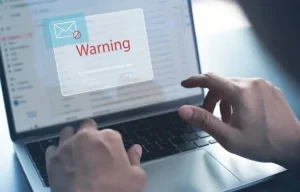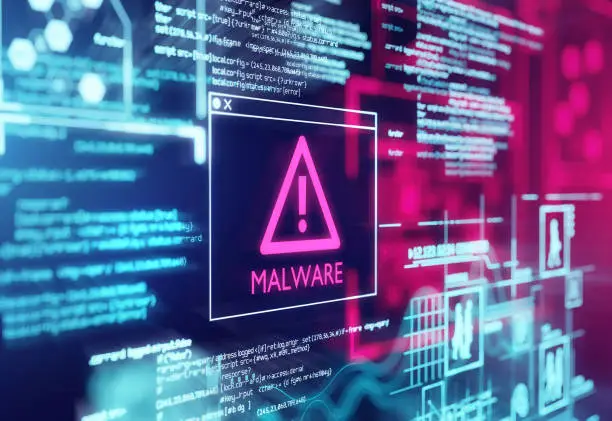Unmasking Phishing: Recognizing, Preventing, and Responding to Cyber Threats
What is Phishing?
To provide you with a clear definition, phishing is a type of social engineering attack employed to illicitly obtain user data. The scenario I’ve just outlined is commonly referred to as an email phishing attack. But what exactly is a phishing email, and what are its typical characteristics?
Phishing Emails
First and foremost, it often involves the impersonation of an authoritative figure or organization. These phishing emails leverage the credibility of these entities to compel individuals to take immediate action, often without due consideration. The recent court case serves as a prime example of this tactic.

The Prevalence of Phishing
If you attempt to access a link provided in a phishing email, you’ll be directed to a deceptive website that closely mimics the legitimate one, complete with seemingly legitimate security measures and protocols. Only minor discrepancies in the web address may give away its fraudulent nature. However, failing to prevent a phishing attack and proceeding to log in on such a fake website will result in your personal information falling into the hands of cybercriminals.
The Consequences of Falling Victim to Phishing
Nonetheless, email security threats extend beyond this scenario. In the first quarter of this year, hackers extensively impersonated DHL, disseminating millions of emails regarding impending package deliveries. Some recipients hadn’t even placed any orders, but out of curiosity, they opened an attached file, unwittingly setting the stage for a Trojan virus to infiltrate their systems, potentially gaining control over their entire computer and data.
Preventing Phishing Attacks
Facebook, in tandem with other social media platforms, stands as this year’s most impersonated brand. Facebook phishing alone accounts for 14% of the fake websites exploited by cybercriminals, which jumps to 24% when all its platforms are considered. With its staggering 2.8 billion users, Facebook represents a goldmine for cybercriminals. The most prevalent form of Facebook scams involves fake emails urging users to change their passwords, but these scams can also exploit current events with relevant keywords and imagery.
Actions to Take if You’re Targeted
Now, let’s consider the worst-case scenario: you fall victim to a phishing attack. Your personal information has now fallen into the hands of a seasoned criminal. But what’s the worst that can happen? Brace yourself. The first step for a criminal is to request new account PINs and remotely manipulate your bank cards using your banking details and social security number. They can then access and drain your bank accounts. But that’s just the beginning.
The Inherent Challenge of Phishing Attacks
Identity theft becomes a real threat as your compromised information can be used to request new passports, driver’s licenses, and more. Criminals can even exploit this information to obtain credits from microfinance organizations, potentially accumulating massive credit card debts in your name. In an instant, you could lose all your funds and find yourself drowning in insurmountable debt. This is how phishing operates, though it’s crucial to note that not all victims will face such extreme consequences. Many will merely have their accounts hijacked and be used for further scams aimed at extracting money or information from their social circles.
Spear Phishing
So, Think of a phishing attack as a broad net, and then imagine a spear – it pierces through your defenses, inflicting a deep wound. Ironically, the most devastating form of phishing is called spear phishing. Unlike regular email phishing, this method involves extensive research on the target, crafting a personalized scam message that might impersonate close friends, family, or business contacts. In some cases, the victim might be part of an organization, prompting the attackers to invest significant effort in studying the company’s hierarchy. Then, seemingly out of the blue, a low-ranking employee receives an email from an executive, requesting them to sign and return a document.

Steps to Take if You’re Targeted by Phishing
With proper research, the employee may not even notice that the email originates from a slightly altered address and willingly provide the corporate stamp and signature to the cybercriminals. This is precisely what happened at the Belgian Crelan bank, where an employee unwittingly handed over the CEO’s stamp and signature to a fake email, enabling hackers to produce convincing transfer documents. These forgeries sailed through the financial department without suspicion, resulting in a staggering $75.8 million loss for Crelan bank. While less common than personal attacks, spear phishing has inflicted significant financial, reputational, and sometimes even physical damage on various businesses, from Google and Facebook to Sony Pictures.
Preventing and Responding to Phishing Attacks
The inherent challenge with phishing attacks is their unpredictability. The Crelan bank employee never anticipated a criminal impersonating their CEO, just as an ordinary U.S. citizen might be shocked to discover that an email from the Supreme Court can be completely fraudulent. Therefore, it can be quite challenging to learn how to prevent phishing attacks and spot phishing attempts without becoming overly paranoid. Your best defense is vigilance and refraining from disclosing personal information online, especially by clicking links in personal emails. If you need to provide information, visit the website manually instead of clicking on attached links. Fake websites can be uncannily similar to the real ones, but manually accessing the site ensures authenticity.
Additional Vigilance and Protection
The same level of vigilance should extend to text files, archives, and even images attached to emails, as they may harbor malware capable of infiltrating your device and seizing your information. Be cautious of these scams, and if possible, disable the automatic loading of messages in your mailbox. Better yet, use a secure email gateway with regularly updated filters to fend off spam and malware. This may not prevent all phishing attacks, but it’s a valuable precaution.
Responding to Phishing Incidents
Now, if your best efforts prove insufficient, and you find yourself targeted by a phishing attack, what steps should you take? First and foremost, contact the police. Phishing is a form of cybercrime with tangible threats to your financial and personal security, warranting official intervention. Subsequently, be sure to close or terminate any compromised bank accounts, informing the institution of the breach. If your passport was compromised, it will need to be replaced. In general, any passwords, documents, or accounts that were compromised should be updated or fortified with additional security measures, such as multi-factor authentication.
In conclusion, phishing is a very serious matter, not to be taken lightly. Fake emails and websites can wreak havoc on individuals and large corporations, and rectifying the damage can be an uphill battle. Prevention is paramount, so it’s crucial to raise awareness about phishing emails and remain vigilant. With this knowledge, you might even spot a scam on your own.
Hope you find this article informative. Thank you for visiting!






















